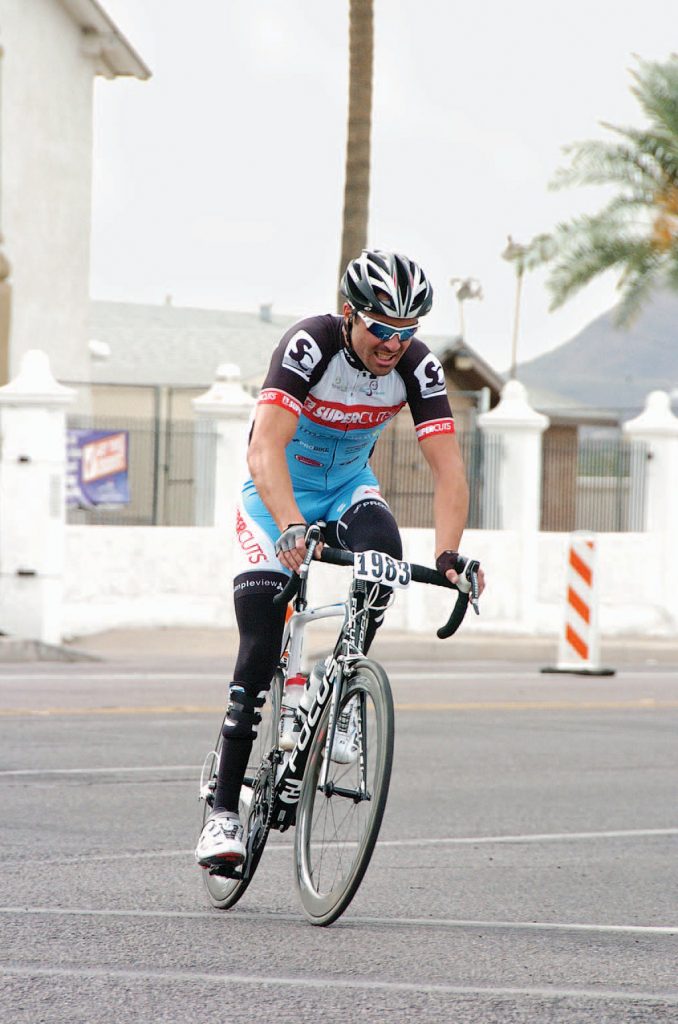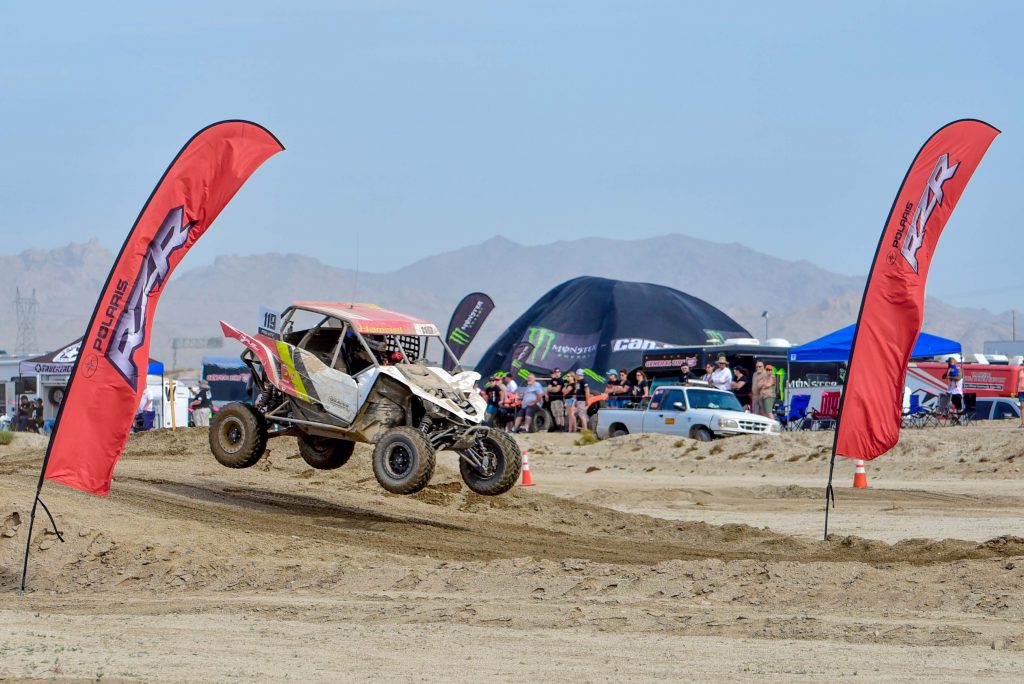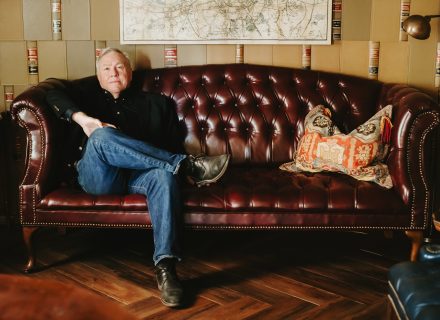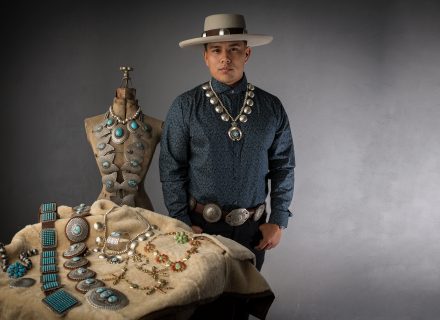After a motorcross accident paralyzed him, Arizona native George Hammel willed his way out of a wheelchair to race UTVs. Another near-fatal wreck forced him to adapt yet again.
It’s hard to swim when your legs don’t work. George Hammel, who was paralyzed at 19 by injuries suffered in a motocross race, knows this, but he entered an Ironman triathlon anyway. He spent more than a year training, and the 1.2-mile swim that opened the race proved to be one of the toughest physical challenges of his life.
After he got out of the Pacific Ocean in Southern California, he pulled on leg braces he’d built himself, strapped himself onto a bicycle, and started pedaling, with 56 miles ahead of him. Soon he arrived at the base of a mountain. Up, up, up it went. Every time Hammel thought he arrived at the top, he discovered he had only arrived at a false summit. He kept pedaling.
Quitting was not an option. He hadn’t given up when doctors told him he’d never walk again, so he wasn’t going to give up now, no matter how tired he was. He entered the race in part because he wants to inspire other people trying to overcome injuries, so giving up when it got hard would send the exact opposite message.
He kept pushing himself until he finally reached the top. “And I just lose it,” he says. “I just barf everywhere. I never get off the bike, I just shoot barf all over the place. People are getting hit by barf and everything. But I didn’t care, because I made it to the top.”
The ascent of the mountain stands as a metaphor for his life: He spent five years in a wheelchair, has broken more than 60 bones, and has hearing and vision issues. Every time he has faced an obstacle, he has overcome it or adapted to it. No matter the size of the mountain in front of him, Hammel always finds a way to make it to the top.
Now, after a nearly fatal off-road racing accident in the spring, he is facing the toughest mountain of his life.
His proper name is George Hammel VI, and his family calls him Georgie, which seems incongruous considering what a badass he is. He grew up in rural Vail, Arizona. His dad (George Hammel V, called Big George) bought him a dirt bike. Hammel adapted to the speed and power quickly, and soon he was racing and winning all over the country. He turned pro, and he appeared headed for stardom. But during a 1998 race, when he was 19, he was bucked backward off the bike. His butt hit the back fender, and the momentum caused his hand to twist the throttle. He hit a jump going way too fast.
He and the bike soared in the air and then separated. Hammel flew over spectators watching on the side of the track and landed behind them. He broke both of his ankles, his arms, his tailbone, and his back. He cracked his skull, too, and was unconscious for a few seconds. When he came to, he couldn’t feel anything below his upper belly. “It felt like my body was a bag of sand,” he says. “I was like, Oh man, I’m toast.”
He was diagnosed with incomplete paraplegia, meaning his spinal cord had not been severed. A young, confident professional athlete, he was defiant when the doctor told him he’d never walk again.
Forced to give up his career as a racer, Hammel went to college, got a degree in computer science, and landed a job in California at a sunglasses company. That job was a revelation for him. He had thought he’d be stuck in a cubicle with other computer nerds for the rest of his life, but the job allowed him to work around other like-minded thrill-seekers. Not for the first or last time, he adapted to a situation he didn’t like and turned it in his favor.
“I don’t have to think that having a computer job is going to suck,” he says. “I can do cool things with the skills that I have. You don’t have to think normally. That structured me for the rest of my life.”
He couldn’t overcome his injury, but he could adapt to what he had. His legs have less than 10 percent of the strength of an able-bodied person, so he relearned how to walk using braces. He figured if he adapted to a dirt bike the way he adapted to his computer job, he could race again.
After he devised a shifting mechanism that allowed him to change gears with his hands and built his own leg braces, he returned to racing his dirt bike, in events for adaptive athletes. “That showed me that I could still do it,” he says. “I felt like the most awesome human being on the planet.”
Disaster struck, again, in 2010 when he crashed and broke his back — again. At first, he planned to get right back on the bike. But his doctors strongly cautioned him against it. He adapted again: Instead of racing dirt bikes, he decided to race UTVs. Stepping into the UTV for the first time was like climbing onto the dirt bike — he loved it instantly. “It’s just knock-down, drag-out, go as fast as you can, throw the car around, and keep as much momentum as you can to win the race,” he says.
Big George says the tribulations his son has been through have made him a more compassionate person. Hammel has always been tenacious, and now he has turned that tenacity toward helping others. “He sees a need and he tries to help the person with that need, whatever that need is,” Big George Hammel says. “He really wants to give back.”
That desire to give back has only gotten stronger after the racing community gave back to him. In a race last April, he rolled his UTV. As he was walking off the track, another car stopped to try to avoid him. That car was hit by another car, which knocked the first car into Hammel. The impact broke his jaw and shoved it into his skull, which was also broken in several places. He was bleeding from every hole in his head.
He spent weeks in the hospital. Doctors put metal plates in his jaw to reconstruct it. He had two surgeries immediately after the crash and faces several more. Two months after the crash, he still had significant hearing loss and was partially blind in one eye. The right side of his face was paralyzed. “It was a pretty gnarly deal,” he says.
In the months of recovery, he tried to adapt to his new normal. With his jaw wired shut, he had to turn his favorite meals into liquid he could ingest through a syringe. He made a video of himself “eating” a hamburger and onion rings and posted it on social media, and it went viral. That led to a fundraiser that brought in thousands of dollars to help him with medical costs.
He’s given up racing because he can’t take the risk of hurting the people he loves again. “I’m lucky that I’m here,” he says. “I almost lost my life in front of a lot of people that I love.”
But he tries to view the end of his racing career as just one more adaptation to make. “You don’t really have a choice,” he says. He still wants to use his life story of perseverance to inspire people. Hammel owns a company that builds websites, and he is starting a business that will build leg braces similar to the ones he made for himself. He’ll focus on those two endeavors and hopes to use his story to inspire others. And he’ll keep adapting to whatever life throws at him.
Photography: Courtesy George Hammel, snm-media.com, Paul Mason
From our January 2020 issue.



















